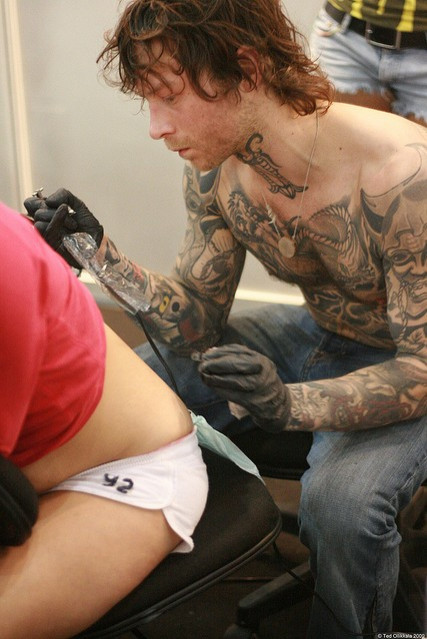Tattoo Infections Linked To Manufacturers' Ink

(Reuters Health) - Contaminated tattoo ink caused at least 22 skin and soft tissue infections last fall in four U.S. states, according to an analysis released on Wednesday.
The infections prompted an investigation by the U.S. Centers for Disease Control and Prevention that uncovered 22 confirmed cases, 4 probable cases, and 27 possible cases of contamination-related infections in New York, Washington, Iowa and Colorado.
Products from four companies were implicated during the probe. None of the companies are identified in a CDC report, released in conjunction with a New England Journal of Medicine study of the New York cases.
"People who get tattoos must be made aware of this risk and seek medical attention" if they get a rash or other abnormalities as the site, according to a commentary in the journal from a team led by Pamela LeBlanc of the U.S. Food and Drug Administration.
The bacteria reportedly got into the containers when the manufacturer used distilled or reverse-osmosis water, which is not necessarily sterile. In the New York case, which led to a recall by the Arizona-based manufacturer, the water was used to dilute black ink into various shades of gray.
The New York cases involved infection with a bug called Mycobacterium chelonae, which caused reddish or purple raised bumps in the areas tattooed with gray. The infection can mimic an allergic reaction and be difficult to treat.
"They were not getting better" with standard care, said Dr. Byron Kennedy of the Monroe County Department of Public Health, the chief author of the New England Journal of Medicine study. "You had some folks who were on treatment for 6 months or more."
The FDA does not directly regulate tattoo ink because it is regarded as a cosmetic, but it can intervene when a product has been adulterated or is regarded as unsafe.
Currently, no FDA regulation specifically requires tattoo ink to be sterile, but some local jurisdictions, such as Los Angeles County, do require that sterile water be used when inks are diluted, according to the CDC report.
CDC is encouraging doctors to keep track of such infections and report them to the FDA.
About one in five Americans has tattoos, according to a 2012 Harris Interactive poll.
'GRAY WASH INK'
The case surfaced in January when the Monroe County Department of Public Health received a call from a dermatologist who was treating a persistent rash on the arm of a 20-year-old man.
The infection was traced back to an unnamed artist and a new, hand-blended "gray wash" ink designed to give shading and a three-dimensional quality to the image. The ink contained no lot number and came from black ink that had been diluted.
A check of other tattoo parlors in the county found that none had used the ink or reported a similar rash.
"This is an uncommon thing," Dr. Amy Derick, a dermatologist at Northwestern University in Chicago told Reuters Health. She coauthored a 2006 study of tattoo and piercing practices that found "the complication rate was pretty low."
"It's not super-dangerous, but it requires multiple months of antibiotics" that can be very expensive, she said. "Sometimes it needs to be cut out, so it's not desirable by any stretch."
The lesson for patients, said Kennedy, is "if they notice they have a rash that's not going away, they should go to their primary care provider and not just self-care."
SOURCES: bit.ly/PwHriF New England Journal of Medicine, August 23, 2012, and 1.usa.gov/10AZNP MMWR, August 22, 2012
© Copyright Thomson Reuters {{Year}}. All rights reserved.





















